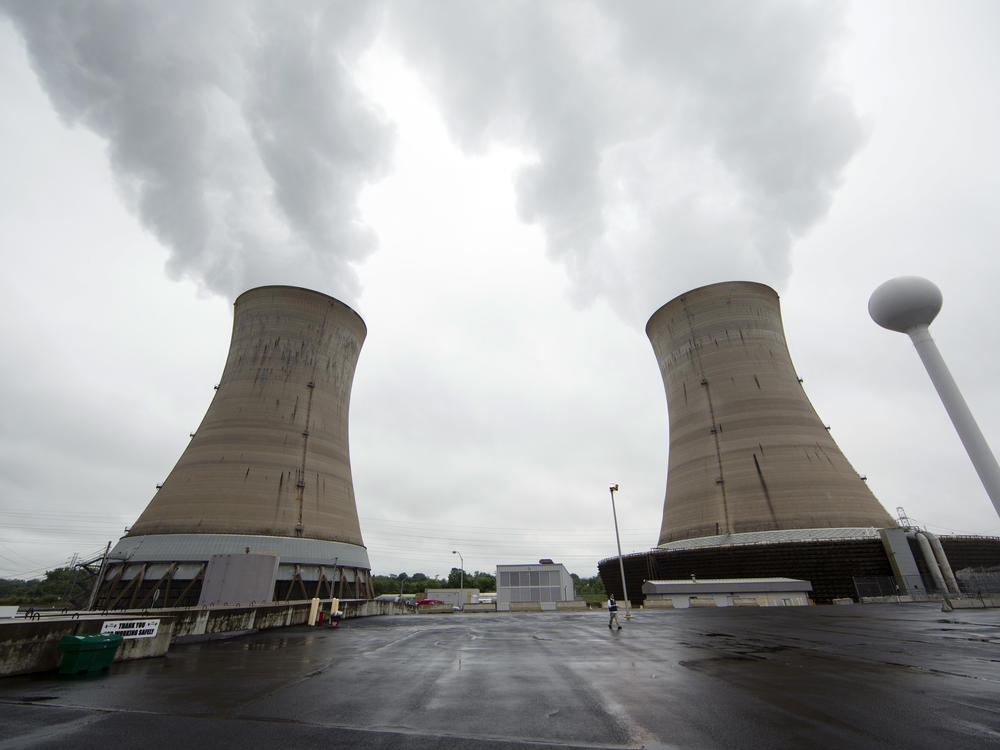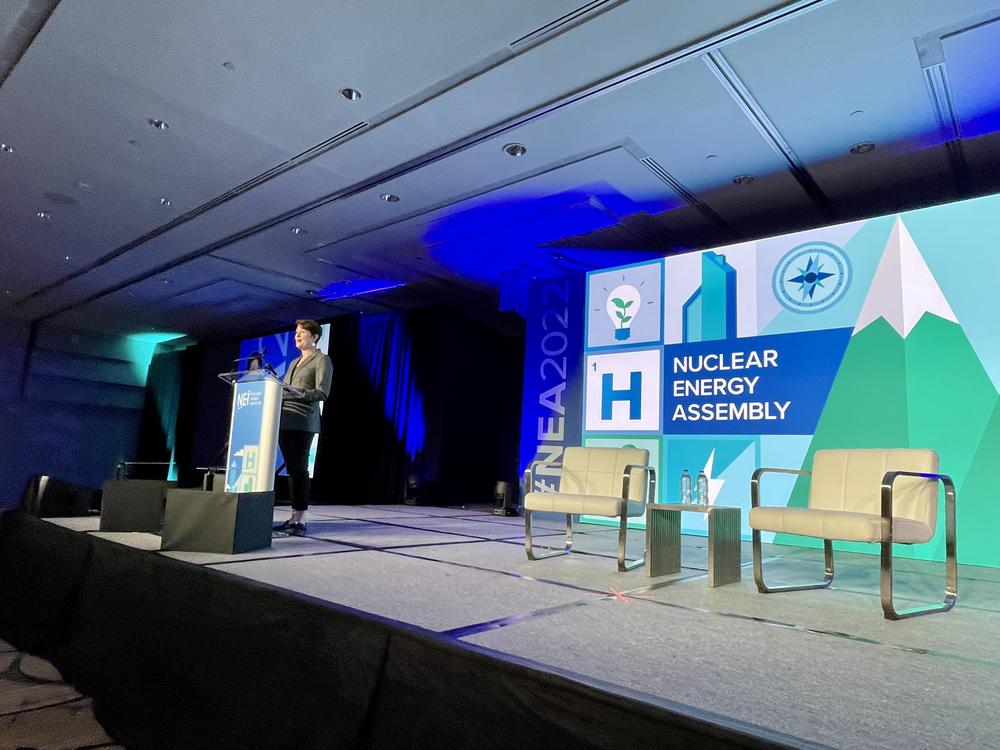Section Branding
Header Content
Nuclear power is gaining support after years of decline. But old hurdles remain
Primary Content
At the Nuclear Energy Assembly in Washington, D.C., this June, speaker Maria Korsnick urged the audience of hundreds to picture a world in which nuclear energy is triumphant.
"In this clean energy future, hundreds of reactors — from the existing models that we have today to advanced reactors both large and small — dot the landscape," said Korsnick, who's president and CEO of the Nuclear Energy Institute, a trade association.
Such a future would have been harder to even imagine a few years ago.
Over the past decade, nuclear power plants across the country have been shutting down early in favor of cheaper natural gas power.
Now, an influx of investment from the government and the private sector is changing the trajectory of the aging U.S. nuclear fleet and spurring development of new nuclear technology.
But many of the same old hurdles to scaling up nuclear power remain.
Nuclear is the largest source of zero-emissions power in the U.S.
One factor in the newfound appreciation for nuclear power is worsening climate change. Nuclear currently contributes nearly one-fifth of all electricity generated in the U.S., according to the U.S. Energy Information Administration, and is the biggest single source of power that does not directly create carbon emissions, although wind power eclipsed it briefly for the first time ever earlier this year.
In an effort to stave off more closures, the federal government began subsidizing older nuclear plants, opening up a $6 billion fund authorized in 2021's Infrastructure Investment and Jobs Act this year. That law also set aside an additional $2.477 billion for research and development of advanced nuclear reactor technology.
"Have no doubt, President Biden is serious about doing everything possible to get the U.S. to be powered by clean energy," Assistant Secretary for Nuclear Energy Kathryn Huff told conference attendees. "Nuclear energy is really essential to this," she said.
States across the country have also rolled out more nuclear-friendly stances.
More than half of all states include nuclear power in their plans to reduce carbon emissions from electricity generation, according to an Associated Press survey.
Some, like New York, were already funding older plants to stay open. In light of California's grid stability issues, Gov. Gavin Newsom started exploring options to keep the Diablo Canyon nuclear plant open, which is otherwise set to close by 2025.
Even major fossil fuel producer West Virginia recently repealed its ban on nuclear power. Republican delegate Brandon Steele, who represents a district in the southern, coal-producing part of the state, said diversifying energy production is good for business and energy security.
"If West Virginia can be a major producer, that serves the energy needs of the entire country and contributes to our national security," he said.
His argument cuts against the climate case for nuclear power. Steele tells NPR that he hoped bringing more nuclear and renewable energy to his state would help increase demand for coal, by increasing the overall demand for energy.
"[Nuclear is] a good complement to our coal-fired power. It's not a replacement, it's a complement," he said.
West Virginia currently has zero nuclear reactors. But Steele said the hope is to get in on the ground floor of advanced nuclear technology that's currently under development.
When it comes to new nuclear technology, the industry has "a tendency to overpromise and underdeliver"
Despite this momentum, if nuclear energy is going to grow even its boosters admit some things need to change.
When it comes to new nuclear technology, the industry has "a tendency to overpromise and underdeliver," said John Hopkins, president and CEO of NuScale Power/NuScale Corp, a publicly traded company working on advanced nuclear technology. His company was the first to receive federal approval for a small modular reactor design, but the first plant is not expected to be up and running until 2029.
"I want to get one module in the ground and prove we're commercially viable and we're going to do it on schedule," Hopkins told attendees during a panel at the Nuclear Energy Assembly in June.
That means cutting costs. Nuclear power has grown more expensive over time, according to the 2021 World Nuclear Industry Status Report.
By contrast, solar and wind power cost less and continue to come down in price, and when combined with long-term energy storage, could make nuclear power even less viable long-term, said Elgie Holstein, senior director for strategic planning for the Environmental Defense Fund.
"This is tough competition for these aging nuclear power plants," he said.
Edwin Lyman, director of nuclear power safety with the Union of Concerned Scientists, said nuclear's "unique liabilities and risks, both with regards to safety and security" also must be a part of any discussion over its usefulness. He points to the 2011 meltdown at a plant in Fukushima, Japan, and Russia's shelling of Europe's largest nuclear power plant in Zaporizhzhia, Ukraine, earlier this year as examples of what can go wrong. There is also still no model for disposing of nuclear waste long-term, although Finland has created the first permanent repository for its spent fuel.
In the race to figure out a way to transition off carbon, energy experts differ on how much nuclear power should play a part. Many models for lowering greenhouse gas emissions rely on keeping steady the amount of nuclear power that exists now, if not growing it. But alternative ones, such as a recent Stanford University study, show a path to zero carbon emissions without any nuclear power.
Jason Bordoff, director of the Center for Global Energy Policy at Columbia University, said skepticism is warranted regarding any new energy technology, "whether it's green hydrogen, long-duration storage, or advanced nuclear."
But with time running out to avert the worst effects of climate change, he said it's good to have options.
"We are so far away from coming anywhere close to meeting our climate goals that we're going to need all the tools in the toolbox," Bordoff said.
Copyright 2022 NPR. To see more, visit https://www.npr.org.


